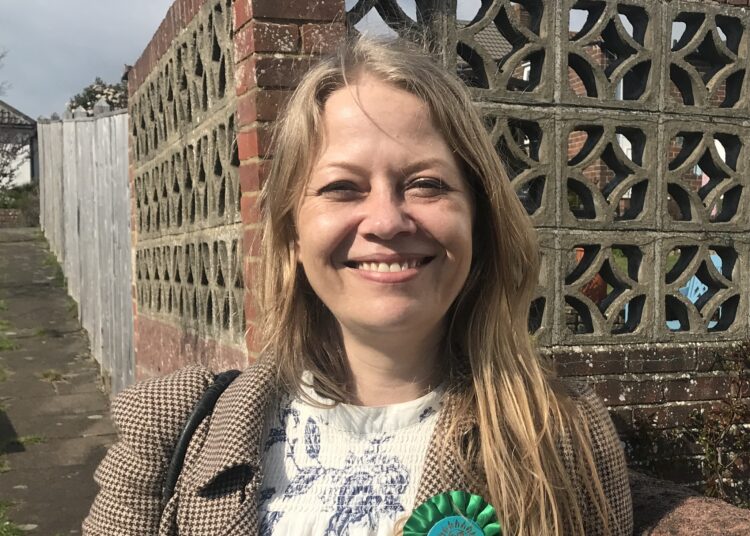Ministers have been urged to go further on improving access to a drug that can reverse the effects of an overdose of opioids such as heroin.
Health Minister Karin Smyth said that the legislation to expand the access of naloxone would “save lives”, with more services and professionals able to supply it.
But the new Green MP for Brighton Pavilion, Siân Berry, was among those pushing the government to go further.
There were calls for taxi drivers and night club staff to be trained in administrating the drug and for it to be available from all pharmacies.
In the House of Commons yesterday (Monday 9 September), Ms Smyth said that naloxone was a “highly effective antidote” to opiate overdose and could be administered “quickly and safely by anyone in an emergency”.
As MPs debated the Draft Human Medicines (Amendments Relating to Naloxone and Transfers of Functions) Regulations 2024, Ms Smyth said that existing regulations limited the reach of the life-saving medicine.
She added: “Widening the statutory framework will mean more services and professionals are able to supply this medication.
“This means easier access to it for people at risk and for their loved ones and, in short, this legislation will save lives.
“We’re already seeing the benefits of professionals outside the health service, such as police officers, being able to administer naloxone.
“North Yorkshire Police has already saved seven lives since April when naloxone was rolled out across the force.”
Ms Berry called on the government to “go further, if you can”. She said: “One of the more simple ways to do this might be simply to make it a pharmacy-available drug, rather than a prescription drug, with some exceptions as we have now.
“However, I don’t want to say: not to do this. I want to say: do this – and then review it and go further, if you can.”
A motion to approve the Draft Human Medicines (Amendments Relating to Naloxone and Transfers of Functions) Regulations 2024 was supported by MPs.








Naloxone should be made available in publicly accessible defibrillator boxes. Especially in this city where opioid overdose is probably more common than cardiac events in public spaces.
Making Naloxone more available may encourage further use of opioids. We already see people ‘ shooting up’ in the street and while some choose to present this solely as a health crisis, a cull of users would be welcome by most residents of the City.
It’s not going to encourage further use – do you really think that there are people considering using in public and then saying “Nah don’t think I will, I might OD” ? The repercussions of overdosing never really pass through the mind of the average smackhead.
They pollute themselves and our society, having little thought about the consequences of their drug use. Perhaps not having ready availability of reversing an overdose might penetrant their drug haze and make them question their actions. Playing roulette with a syringe should be their personal choice and not inflicted on the rest of us.
Addiction is a complex health problem. Addicts are unlikely to consider the availability of Naloxone a prerequisite to their next fix.
To suggest this effective life-saving treatment be denied to those in need is both inhumane and deliberately cruel.
Further, where would you stop in your crusade? Should ex-smokers be denied treatment for lung cancer? How about alcoholics or are they on the right side of your addiction pantheon?
The National Survey on Drug Use and Health (2004-2016) and found that:
1) Increased access to naloxone did not lead Americans, including drug users, to perceive heroin as less risky.
2) Participants who lived in areas with mandated easy access to naloxone did not believe heroin was less risky compared to those living in areas with restricted access.
3) Young people’s risk perceptions regarding heroin use did not change depending on the laws where they lived, suggesting that naloxone access laws do not encourage young people to try heroin due to perceived reduced risk.
The available evidence suggests that the presence of naloxone does not create more risky behavior among individuals who use opioids or heroin. Naloxone access laws and availability do not appear to influence perceptions of heroin risk, and users continue to view heroin as risky regardless of their environment’s naloxone policies.
Why should we aid junkies perpetuate their addiction at our expense? They steal from us to pay for their addiction, why would we seek to assist them to do this? Assistance to stop using opioids is available, yet many continue to use street drugs whose quality and quantity is unknown to them. It is cruel and inhumane to assist addiction, let them seek help that is there. But anything more encourages further use.
To look at it pragmatically, it is far cheaper to deal with an overdose with naloxone than deal with the consequences of that overdose.
Narcan, the brand of Naloxone in Canada, is already readily available over the counter. They changed their laws March last year. Plenty of examples of why this move should be done. Been strongly supporting the availability of the nasal spray for a while now.
Also, our laws already allow anyone to use naloxone under s17 of the HMR for life-saving purposes. There is little to no reason for politicians to drag their feet about this one.
Junkies could wear Naloxone on a bit of string around their necks. This would identify them as drug users and enable those to have the antidote available in the event of overdose, and choose to support their miserable lives.
Will you be wearing a bottle of 12% ABV white cider around your neck to signify your descent into alcoholism?
As a non drinker your barb misses.
The sight of people intoxicated by alcohol and other substances on our streets is unpleasant to all.
Add the general decline of the City due to the continued failure to deal with graffiti and flyposting.
The Council had promised the electorate that change is on it’s way. Can we ask when that will begin?
Mean-spirited comment aside, a lot of known regular users are typically issued naloxone, and also the workers that support them. CGL to a lot of work on this front.
It would be interesting for the tax paying public to know how many IV drug users and street drinkers there are in the City and the cost of maintaining them. Is this number growing? It certainly appear they are now more visible on the streets.
There is nothing mean spirited in society paying to support derelicts. Throughout history methods of dealing with them have varied. Spending our money in their support needs to be seen as giving ‘best value’. We also need to be sure that effective discouragement of this life style is in place.
Naloxone is only one aspect of an incredibly complex issue; best value comes from a multifaceted approach that covers prevention, treatment, recovery, and maintainance.
The condescending name calling is very mean spirited, and completely ignores how people can end up in the thralls of addiction, for example, chronic pain analgesia is a very common way people can become addicted to opioids.
Honestly, let them rot.
The consequences of such an action would most likely be more far-reaching than you would think.